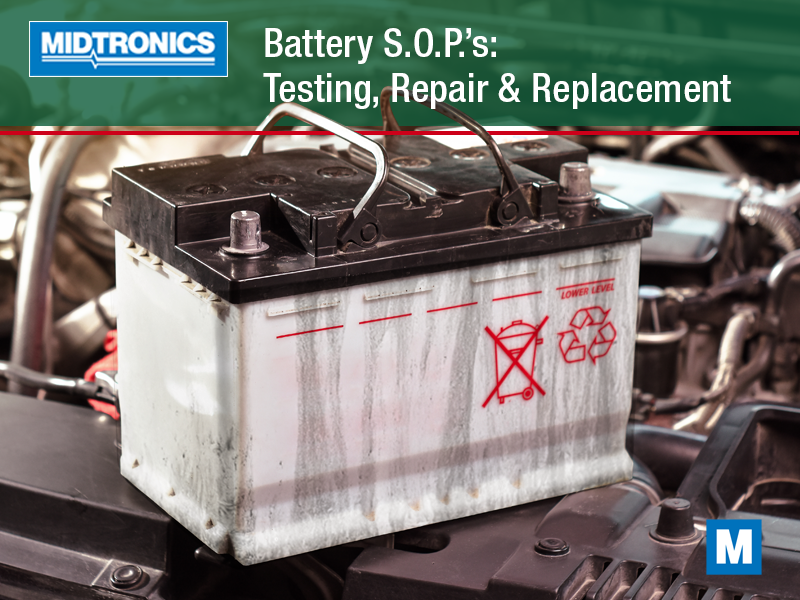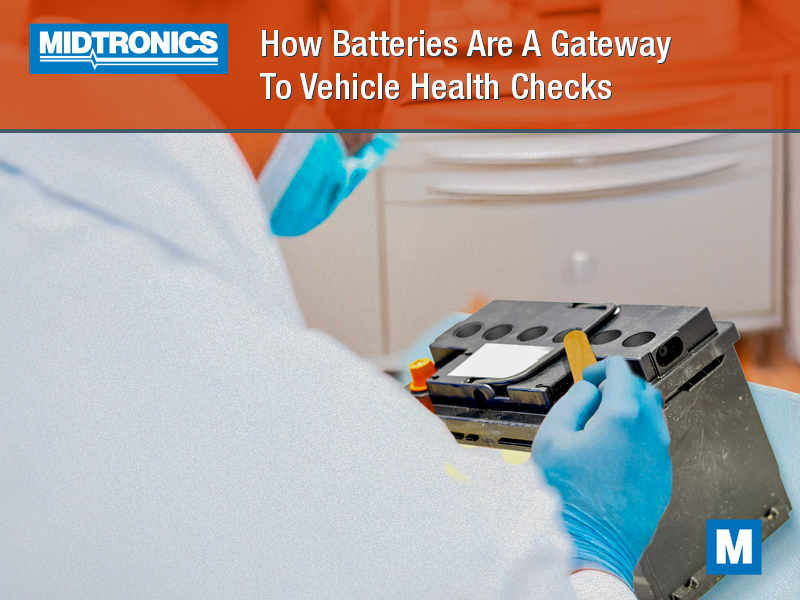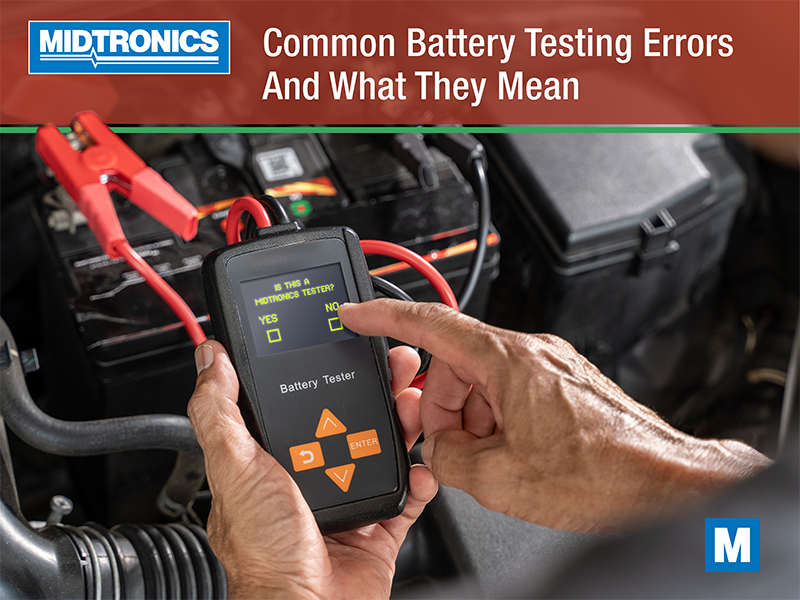If there’s one thing that can grind a customer’s day to a halt, it’s a dead battery. Whether it’s a conventional 12V lead-acid battery or hybrid or EV system, a properly diagnosed and serviced battery can mean the difference between a seamless repair and an expensive comeback. Battery issues might seem routine, but the details matter, especially when it comes to safety, proper diagnosis, and warranty claims.
We’ve put together this guide to the standard operating procedures for battery testing, repairs, and replacements. This isn’t just a checklist – it’s a roadmap to ensuring accuracy, efficiency, and technician safety, and it covers everything from PPE to high-voltage handling so your shop can keep vehicles moving and customers happy.
Wear PPE
Before you even think about putting your hands on a battery, make sure you’re properly protected. Battery acid, high-voltage currents, and even simple corrosion can pose serious hazards. Always wear safety glasses, gloves, and, when working with high-voltage batteries, insulated tools and protective gear. A single arc can lead to injury or a very bad day, dress up before you get to work.
Also, for technicians working with hybrid or electric vehicle high-voltage batteries and systems, wearing category-rated insulated gloves and using a high-voltage safety mat is crucial. Some batteries can produce up to 800 volts, making safety gear a life-or-death matter. Always inspect the PPE before each use to ensure there are no cracks, tears, or compromises that could expose you to electrical hazards.
Verify the Terminals are Tight
Loose battery terminals are one of the most overlooked causes of electrical problems and bad tests. Before running a battery test or diagnosing electrical issues, give the terminals a firm wiggle. A slightly loose terminal can mimic a failing battery, leading to misdiagnosis and unnecessary replacements. Tighten connections to manufacturer torque specs to ensure proper contact and prevent unwanted voltage drops.
It’s also a good practice to clean the terminals with a battery terminal brush before securing them. Corrosion buildup can prevent a good connection, leading to weak starts and intermittent electrical failures. Applying dielectric grease to the terminals after tightening can help prevent corrosion and promote a long-lasting connection.
Disconnect the Ground Side First
Whenever you’re removing a battery, always disconnect the negative terminal first. It often seems unnecessary in a professional setting, but it’s in the repair manual for a reason. This prevents accidental short circuits if your wrench makes contact with the vehicle’s body while working on the positive terminal. It’s a simple habit that prevents accidental sparks, blown fuses, and potential damage to control modules.
After removing the ground terminal, move it out of the way to ensure it doesn’t accidentally make contact with the battery post while working on the positive side. When you’re reinstalling the battery, always connect the positive terminal first and then the ground. This sequence helps prevent unintentional grounding and reduces the risk of arcing.
Obtain a Failed Test Result for Warranty Claims
If you’re replacing a battery under warranty, the manufacturer won’t just take your word for it. There must be proof. Always perform a full battery test using an approved diagnostic tool and save the results. Many battery warranties require a printout or digital record of a failed test before authorizing a replacement, and that goes for both OEM warranty replacements and aftermarket batteries. Skipping this step could mean an unpaid claim and an unhappy customer, or money you don’t recoup when you attempt the warranty reimbursement.
Also, keep records of the test results with your repair order in case the warranty claim is disputed. Some manufacturers also require documentation of battery maintenance history to process a warranty claim successfully.
Disable the High Voltage Battery
Working on hybrid or EV systems? Step one is always disabling the high-voltage (HV) battery. These packs carry lethal voltages, and even minor mistakes can lead to serious injury or vehicle damage. Follow manufacturer guidelines to disconnect the HV battery safely, ensuring that all warning lights are off and verifying isolation before proceeding with repairs.
Many EVs have service disconnect plugs or high-voltage relays that must be manually disengaged before performing any electrical work. After disabling the HV system, always verify the absence of voltage before touching any HV cables or components. Even a residual charge could pose a risk.
Use Only Approved HV Battery Servicing Equipment
High-voltage battery work isn’t something to improvise. Manufacturer-approved diagnostic tools, insulated gloves, and HV-rated multimeters are mandatory. Using non-approved tools can lead to incorrect diagnostics or, worse, personal injury. That includes items like battery lifts and tables too, where a lower-cost generic option might seem like a good replacement for the costly special-tools variety from the OEM catalog, but risk collapsing under the weight or imbalance of a heavy battery pack.
For diagnostics, some manufacturers require battery analyzers that communicate directly with the vehicle’s Battery Management System. These tools can provide deeper insights into battery cell health, charge cycles, and potential failure points – data crucial for making repair or replacement decisions.
Relearn the Hybrid/EV Battery Pack Capacity
After replacing or servicing a hybrid or EV battery, the job isn’t finished until you’ve performed a capacity relearn. Many modern hybrid and EV systems require a relearning procedure to recalibrate the BMS. Skipping this step can lead to improper charging, reduced range, or errors that trigger warning lights. Always consult manufacturer service procedures to complete this critical final step, which is why subscribing to software that contains in-depth repair procedures is a must.
In some cases, this process requires a full discharge and recharge cycle, which can take several hours. Depending on the make, you may require a specialized scan tool to initiate the relearn process. Ensuring the BMS accurately measures capacity prevents issues such as uneven cell balancing or premature battery degradation.
Keep Battery Service Safe and Accurate
Whether you’re working on a conventional 12V system or a high-voltage hybrid or EV, following proper battery service procedures ensures it’s done accurately, efficiently, and – most of all – safely. Cutting corners can lead to misdiagnosis, unnecessary repairs, or even dangerous situations.
Technicians should regularly update their training on the latest battery technologies to stay ahead in this evolving landscape. Need the best tools for the job? Check out Midtronics’ lineup of battery diagnostics and servicing equipment to keep your operations ahead of the curve.




